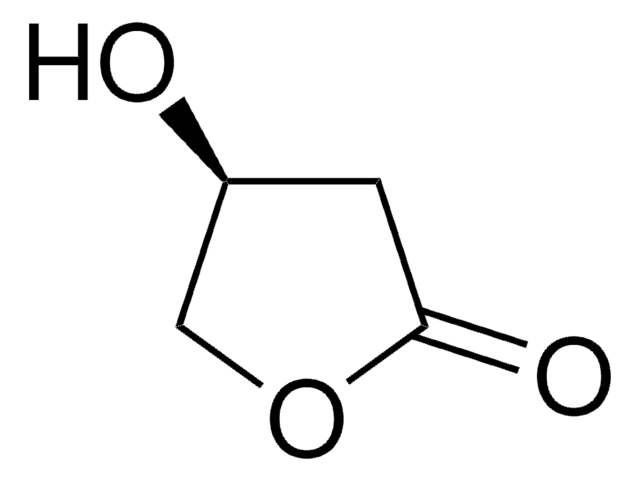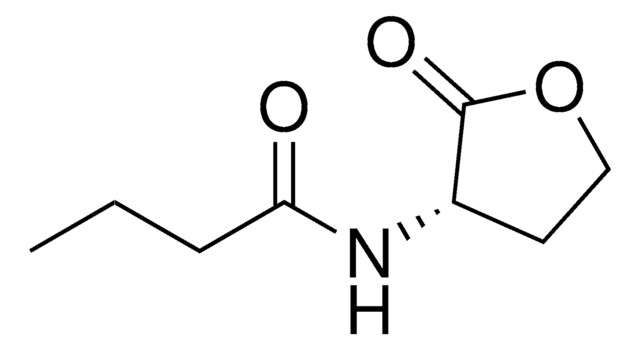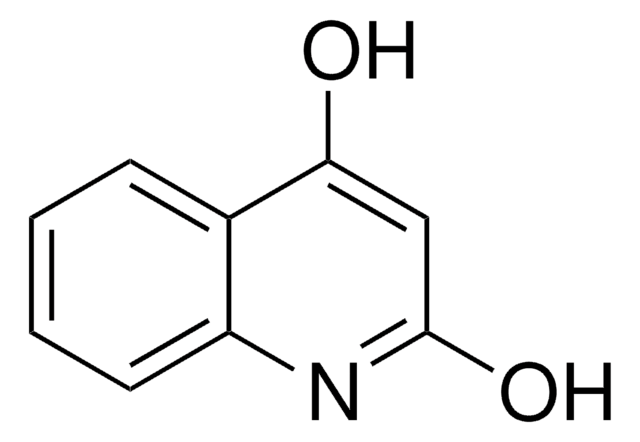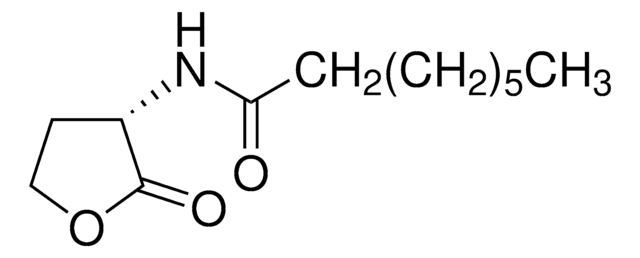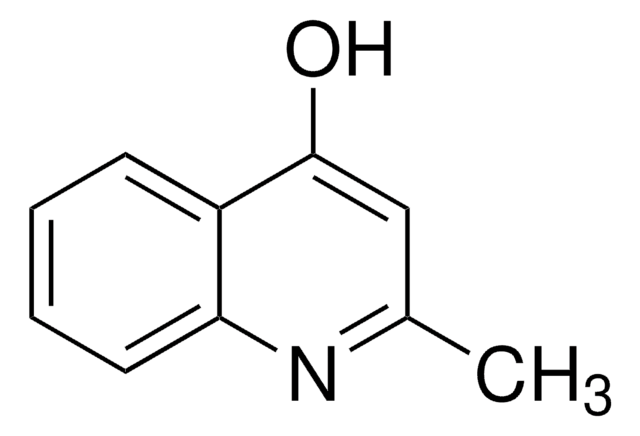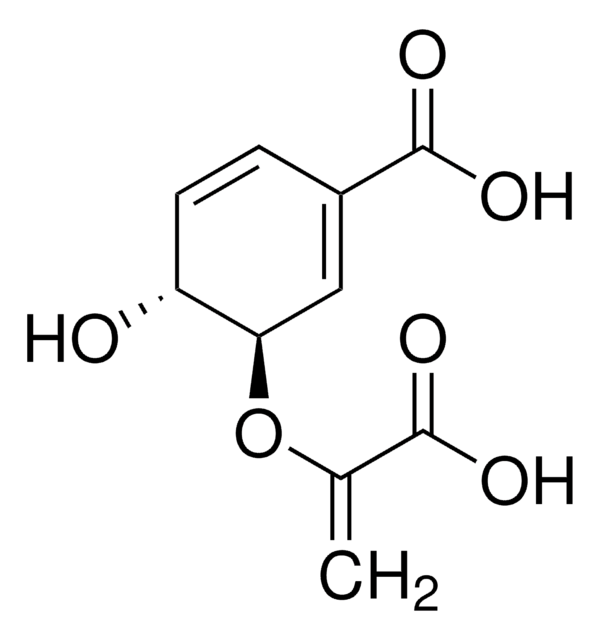Wszystkie zdjęcia(1)
Kluczowe dokumenty
94398
2-Heptyl-3-hydroxy-4(1H)-quinolone
≥96.0% (HPLC)
Zaloguj sięWyświetlanie cen organizacyjnych i kontraktowych
About This Item
Wzór empiryczny (zapis Hilla):
C16H21NO2
Numer CAS:
Masa cząsteczkowa:
259.34
Numer MDL:
Kod UNSPSC:
12352005
Identyfikator substancji w PubChem:
NACRES:
NA.25
Polecane produkty
Poziom jakości
Próba
≥96.0% (HPLC)
Formularz
powder
temp. przechowywania
−20°C
ciąg SMILES
CCCCCCCC1=C(O)C(=O)c2ccccc2N1
InChI
1S/C16H21NO2/c1-2-3-4-5-6-11-14-16(19)15(18)12-9-7-8-10-13(12)17-14/h7-10,19H,2-6,11H2,1H3,(H,17,18)
Klucz InChI
CEIUIHOQDSVZJQ-UHFFFAOYSA-N
Opis ogólny
2-heptyl-3-hydroxy-4-quinolone can function as an intercellular signal.
Zastosowanie
Quorum sensing is a signaling system used by bacteria to coordinate activity based upon their population density. The system involves the exchange of signaling molecules among bacteria via cell receptors. Heptyl-3-hydroxy-4(1H)-quinolone (PQS) is a quorum sensing-regulated virulence factor used to induce and study the regulation of virulence genes such as those involved in iron scavenging.
Opakowanie
Bottomless glass bottle. Contents are inside inserted fused cone.
Ta strona może zawierać tekst przetłumaczony maszynowo.
Zwroty wskazujące rodzaj zagrożenia
Klasyfikacja zagrożeń
Aquatic Chronic 4
Kod klasy składowania
11 - Combustible Solids
Klasa zagrożenia wodnego (WGK)
WGK 3
Temperatura zapłonu (°F)
Not applicable
Temperatura zapłonu (°C)
Not applicable
Wybierz jedną z najnowszych wersji:
Masz już ten produkt?
Dokumenty związane z niedawno zakupionymi produktami zostały zamieszczone w Bibliotece dokumentów.
Klienci oglądali również te produkty
Doreen S W Hooi et al.
Infection and immunity, 72(11), 6463-6470 (2004-10-27)
Pseudomonas aeruginosa releases a spectrum of well-regulated virulence factors, controlled by intercellular communication (quorum sensing) and mediated through the production of small diffusible quorum-sensing signal molecules (QSSM). We hypothesize that QSSM may in fact serve a dual purpose, also allowing
Stephen P Diggle et al.
Chemistry & biology, 14(1), 87-96 (2007-01-27)
Pseudomonas aeruginosa produces 2-heptyl-3-hydroxy-4(1H)-quinolone (PQS), a quorum-sensing (QS) signal that regulates numerous virulence genes including those involved in iron scavenging. Biophysical analysis revealed that 2-alkyl-3-hydroxy-4-quinolones form complexes with iron(III) at physiological pH. The overall stability constant of 2-methyl-3-hydroxy-4-quinolone iron(III) complex
E C Pesci et al.
Proceedings of the National Academy of Sciences of the United States of America, 96(20), 11229-11234 (1999-09-29)
Numerous species of bacteria use an elegant regulatory mechanism known as quorum sensing to control the expression of specific genes in a cell-density dependent manner. In Gram-negative bacteria, quorum sensing systems function through a cell-to-cell signal molecule (autoinducer) that consists
Jintae Lee et al.
Microbial biotechnology, 2(1), 75-90 (2009-01-01)
Indole is an extracellular biofilm signal for Escherichia coli, and many bacterial oxygenases readily convert indole to various oxidized compounds including 7-hydroxyindole (7HI). Here we investigate the impact of indole and 7HI on Pseudomonas aeruginosa PAO1 virulence and quorum sensing
Jin-Hyung Lee et al.
FEMS microbiology letters, 329(1), 36-44 (2012-01-19)
The emergence of antibiotic resistance has necessitated new therapeutic approaches for combating persistent bacterial infection. An alternative approach is regulation of bacterial virulence instead of growth suppression, which can readily lead to drug resistance. The virulence of the opportunistic human
Nasz zespół naukowców ma doświadczenie we wszystkich obszarach badań, w tym w naukach przyrodniczych, materiałoznawstwie, syntezie chemicznej, chromatografii, analityce i wielu innych dziedzinach.
Skontaktuj się z zespołem ds. pomocy technicznej

